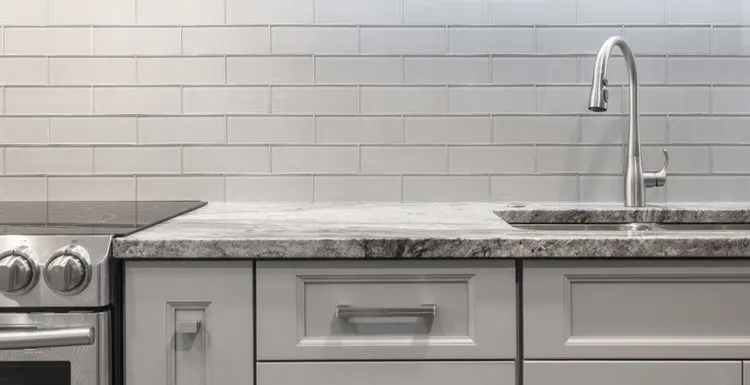Installing a ceramic subway tile backsplash is one of the best ways to instantly update your kitchen.
Need a little design inspiration, information on pricing and tile sizes, or just want to check out the vast array of subway tile patterns to choose from?
This informative guide is for you.
Considering Subway Tile Backsplash?
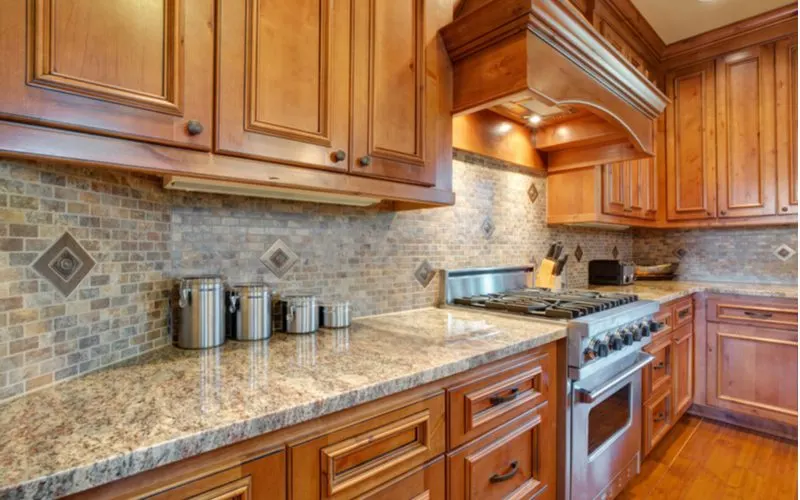
Artazum/Shutterstock
A subway tile backsplash is one of those kitchen makeovers with a serious wow factor.
It’s amazing how the simple addition of these iconic rectangular tiles can totally transform a boring backsplash into something straight out of a home décor magazine.
If you like the look of a subway tile backsplash and are considering it for your kitchen, you’ve likely got a lot of questions you want answered before you take the leap.
- What is subway tile, and what’s special about it?
- Are subway tile backsplashes still in style?
- Is this the best material for your backsplash?
- How much does subway tile cost for a backsplash?
- What patterns, colors, and sizes are there to choose from?
- What’s the best backsplash tile layout for your kitchen?
We’ve got answers for these questions and more in our ultimate guide to subway tile backsplashes.
You’ll learn what your size, pattern, and color options are, along with how much you can expect to pay to complete your new subway tile backsplash.
We’ll talk about the durability and quality of this material and how to decide if this is the right backsplash material for your needs.
Ready to learn everything there is to know about the fascinating world of subway tile backsplashes? Hop on board!
What Is Subway Tile?
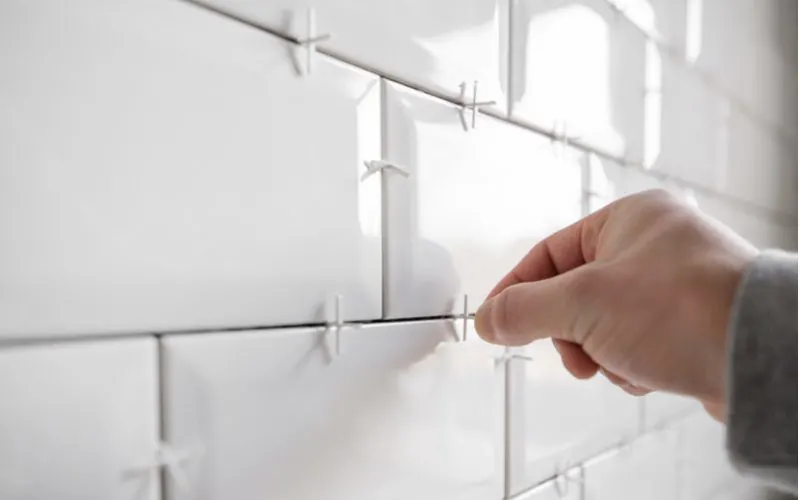
LaineN/Shutterstock
Subway tile is a term used to describe glazed ceramic rectangular tiles that were first used in New York City subway stations at the turn of the 20th century.
The original subway tiles were white and precisely 3 inches wide by 6 inches long, and this traditional type of tile is still popular today.
The clean, precise look of subway tile has made it a favorite design element for homeowners for over a century.
It’s commonly seen in the bathrooms and kitchens of older homes, but it’s especially popular now as a backsplash material (the backsplash is the protective panel on the wall behind a stove or sink).
While classic white subway tile will probably never go out of style, the subway tile trend has shifted over the years.
White is still the most popular choice, but homeowners are increasingly favoring colorful, unique tiles that subtly inject interesting colors, patterns, and designs into their home.
The brick-like shape and shiny, glazed appearance of subway tile is perfect for creating a look that is modern while paying homage to the vintage uses of this iconic tile.
Why Use Subway Tile Backsplash?
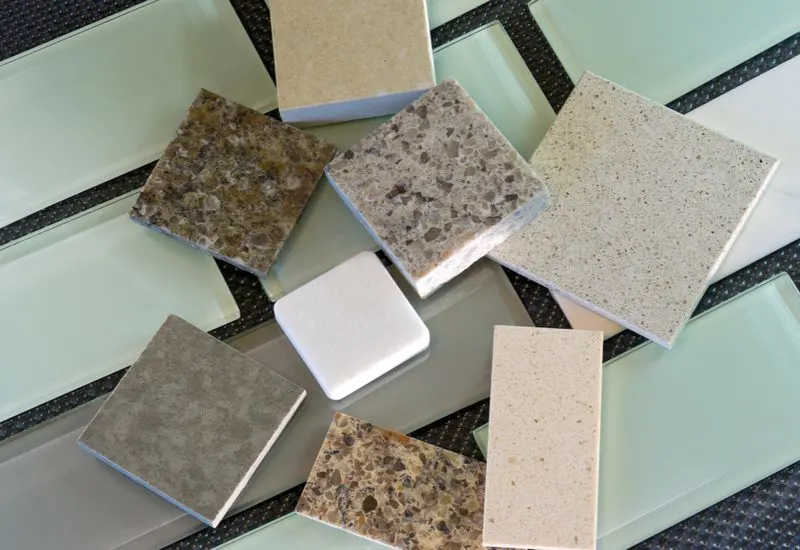
Joe Ferrer/Shutterstock
Subway tile has been a home design staple for more than a century because it offers so many unique benefits.
Think about it: if this material was chosen to hold up in damp, dirty, and leaky conditions in highly-trafficked underground subway stations, you know it’s going to hold up in your dry, clean kitchen!
If you’re not 100% sold on subway tile as your backsplash material yet, take a look at some of the benefits you can expect if you choose this material.
Durable
Unlike vinyl peel-and-stick backsplashes, subway tile backsplashes are durable and long-lasting. Ceramic tiles like subway tiles can last for 50 years or more, making them one of the most durable backsplash materials available.
Experts note that the grout, adhesive, and caulk will likely dry out long before the tiles themselves do! If you want to ensure your backsplash comes out beautifully and is built to last, choose subway tile.
Cost-Effective
While subway tiles certainly aren’t cheap, they’re an extremely cost-effective backsplash material because of how long they last.
You can grab a peel-and-stick vinyl backsplash for as little as $8–$12, but these sticky tiles aren’t heat-resistant, and the adhesive will fail within 5 years—often sooner.
Subway tile, on the other hand, usually costs around $1,000 to install and can last for 50+ years. By that time, you’d have replaced a peel-and-stick backsplash 10 times, spending as much as $1,200 in total.
It’s much more cost-effective to pay $1,000 upfront and deal with a one-time install for tiles that last half a century than it is to shell out $1,200 to continue replacing a sticky, low-quality backsplash over the years.
Eco-Friendly
Ceramic tile, like subway tile, is very eco-friendly. The clay mining process, ceramic firing and manufacturing processes, and even installation in your kitchen all have a low environmental impact.
In fact, many subway tile manufacturers use recycled material in their tile to make this backsplash material even more eco-friendly.
When you consider the low environmental impact involved in mining, manufacturing, and installing these tiles, along with their 50-year+ durability, subway tiles are one of the most eco-friendly materials you can use for your backsplash.
Stain-Resistant
Subway tile is glazed ceramic, so the surface is shiny and smooth. The smooth surface doesn’t feature tiny nooks and crannies like other tiles, so it’s much more resistant to stains and becomes a lot easier to clean.
Remember that these tiles were originally used in highly-trafficked areas that see a lot of messes, dirt, and grime—subwayways, public restrooms, and commercial kitchens.
If you’re looking for a backsplash material that won’t discolor or stain if a few drops of spaghetti sauce migrate out of the pot, subway tile is the best choice.
Moisture-Resistant
Subway tiles are resistant to outside moisture and have a hard, shiny, glazed surface.
Moisture is unavoidable in the kitchen; from steam during cooking to liquid spills, there are always going to be times when your backsplash is subjected to unwanted wetness.
If you’re using a cheap vinyl backsplash, a little moisture could be the end of it. But when you use durable subway tile for a backsplash, you can rest easy knowing it’s moisture-resistant. It’s going to take a lot more than liquid to destroy subway tile!
Heat-Resistant
It gets hot in the kitchen, especially around your stove and rangetop. That’s why it’s essential to look for a backsplash material that is resistant to heat and able to withstand high temperatures nearby.
Subway tile is kiln-fired during manufacturing to make it incredibly durable and non-porous.
It’s heat-resistant enough to be used in commercial kitchens with appliances that reach higher temperatures than residential appliances.
The high temperatures each tile faces in the kiln mean that the comparatively low temperatures your oven and range can reach will just pale in comparison.
When it comes to turning up the heat, subway tiles won’t crack, come loose, melt, or lose their shape, but cheaper vinyl lookalikes will.
Instant Kitchen Upgrade
The instant facelift a subway tile backsplash gives any kitchen is probably the most satisfying benefit.
The backsplash area seems small in comparison to the rest of the kitchen, but since it’s right at your eye level, it has a major effect on the overall appearance and theme of the kitchen.
Even if everything else is carefully styled and decorated, a poorly-done backsplash or one that’s boring can wreck your efforts.
But installing a subway tile backsplash, whether it’s bright white and classic or colorful and intriguing, is one of the best ways to give your kitchen an instant upgrade.
It’s the first thing you’ll notice when you walk into the kitchen because it’s right at your eye level, and a professionally installed subway tile backsplash will impress every guest.
Subway Tile Backsplash Patterns and Styles
Subway tile comes in a variety of colors and designs. You can find any color under the sun, and there are lots of variations and designs available.
This makes it simple to choose subway tile that will accent your current kitchen theme or help you create a new vibe in the room.
From classic bright white to funky, bold shades of color and deep, sophisticated color schemes that add an instant touch of elegance and style, there’s a subway tile out there for every kitchen.
The way you arrange the tiles—your subway tile pattern—is another way to mix things up in the kitchen. These are some of the most common and popular subway tile patterns for backsplashes:
- Brick bond: Arranged like bricks in masonry, this is an offset bond where the edges of the tiles between rows never perfectly line up. This is the most popular subway tile pattern for backsplashes.
- Stack bond: Arranged like stacked blocks, this is a pattern that can be arranged horizontally or vertically for homeowners who want clean, precise lines in the finished design.
- Herringbone: This tile pattern resembles a braid and features vertical rows of angled tiles facing in opposite directions that are slightly offset.
- Double herringbone: This tile pattern is a more intricate version of the herringbone pattern. Groups of 2 tiles are stacked at more of an offset angle than in the herringbone pattern to produce a unique, “braided” pattern.
- Chevron: This tile pattern is similar to the herringbone pattern; it features vertical rows of angled tiles facing in opposite directions. Unlike the herringbone pattern, tiles in the chevron pattern are not offset.
- Basket weave: This pattern features sets of 2 tiles in alternating vertical and horizontal positions. They sandwich together evenly due to the shape and size of the subway tiles.
Check out some of the ways homeowners use subway tiles in different patterns, layouts, and styles to bring their kitchen visions to life.
Subway Tile Backsplash With Inset Herringbone Pattern
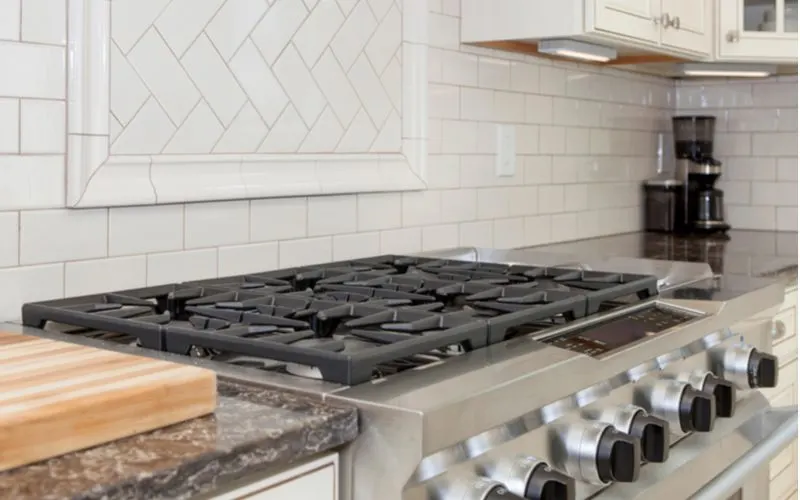
Berkay Demirkan/Shutterstock
The traditional horizontal brick-style layout gives this backsplash a classic, clean look, while the inset herringbone pattern framed with beveled tiles adds a whimsical, unexpected touch.
Forest Green Brick Bond Subway Tile Backsplash
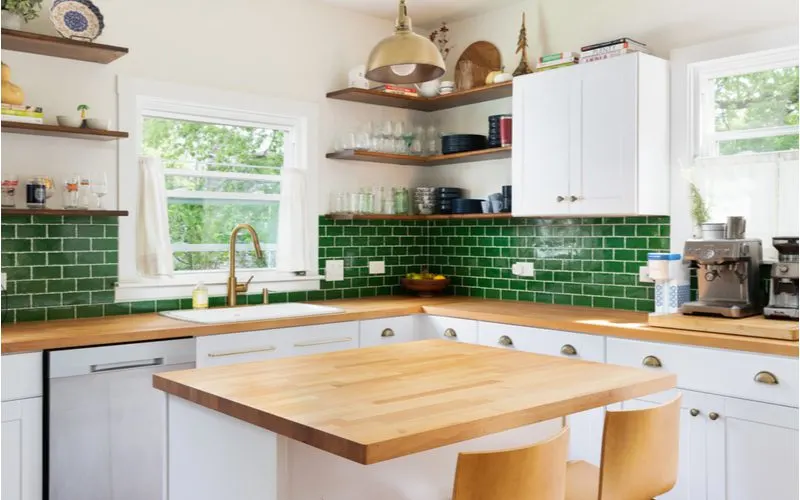
Joe Hendrickson/Shutterstock
A vibrant forest green with depth contrasts so nicely with bright white and wooden accents to create a natural, modern kitchen theme.
Installed in the classic brick bond pattern, these tiles are arranged so the ends of each row line up with the center of the tiles in the row above.
Classic Wraparound Brick Bond Backsplash
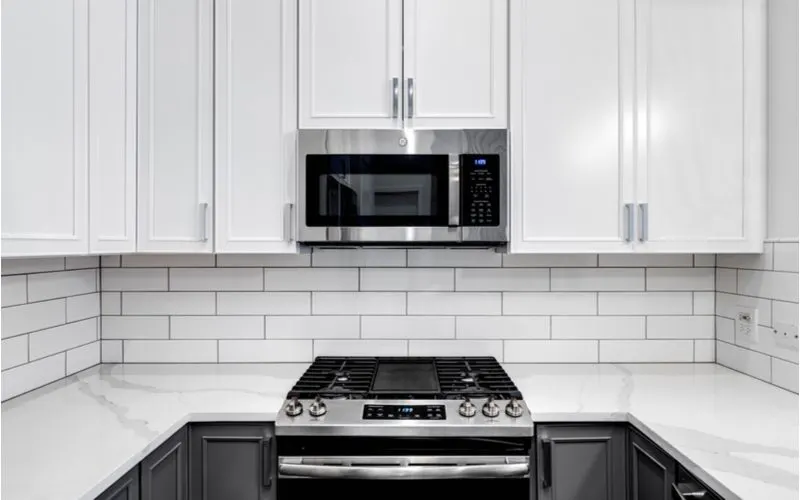
Joe Hendrickson/Shutterstock
This traditional style is beautiful in its simplicity. The classic 3×6 subway tiles add dimension and interesting intersecting lines to the backsplash.
The wraparound style brings this accent further into the simple kitchen to act as a bright focal point.
Traditional Subway Tile With Mosaic Backsplash Centerpiece
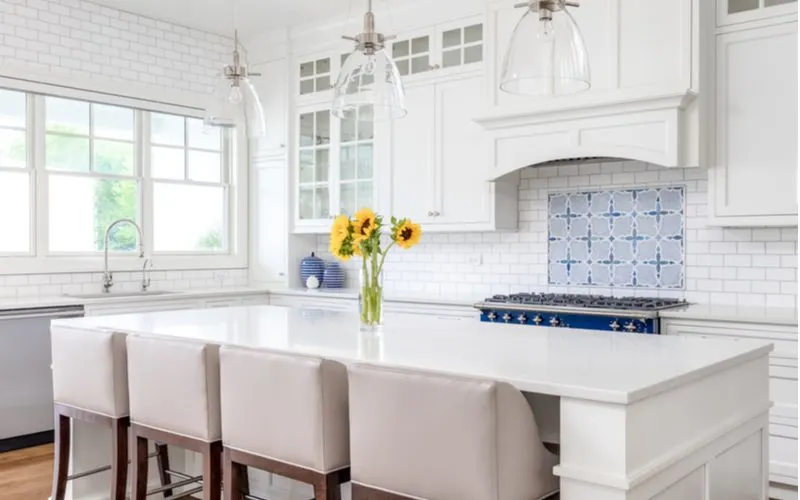
Joe Hendrickson/Shutterstock
If white subway tile strikes you as boring, you’ll love the idea of working in a detailed mosaic tile centerpiece for the backsplash!
The subway tiles (arranged in the classic brick bond pattern) contrast nicely with the busier pattern in the mosaic centerpiece.
Charcoal Gray Brick Bond Subway Tile Backsplash
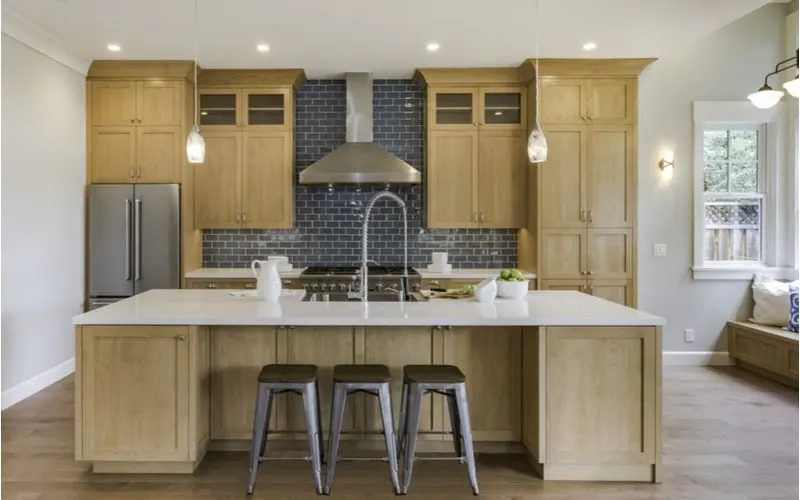
Krista Abel/Shutterstock
The brick bond tile pattern is one of the most popular for subway tile placement because it’s a perfect fit for their rectangular shape, which is very similar to a brick.
In a deep and modern charcoal gray, the look is more dramatic.
Brick Bond Marbled Subway Tile Backsplash
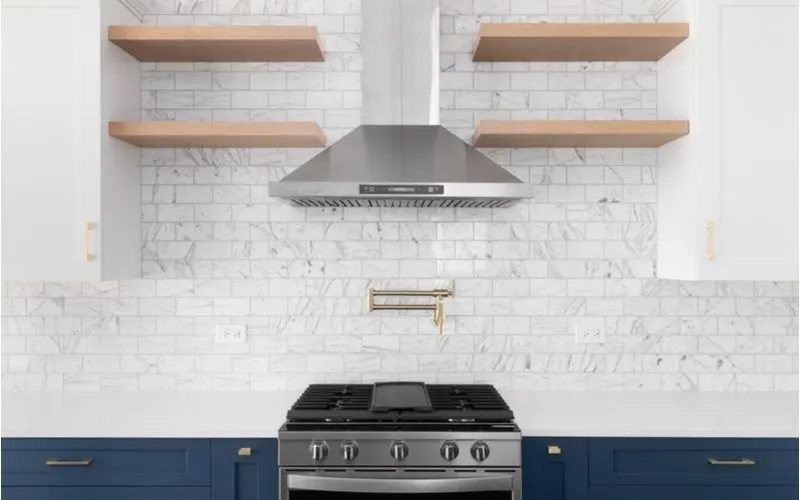
Joe Hendrickson/Shutterstock
You’ll see this brick bond pattern a lot as you browse inspiration photos for subway tile backsplashes because it always looks good and never goes out of style.
The marbled look of these ceramic subway tiles adds an air of elegance to this minimalist kitchen, and we love the pop of navy color in the lower cabinetry.
Azure Blue Subway Tile Stack Bond Backsplash
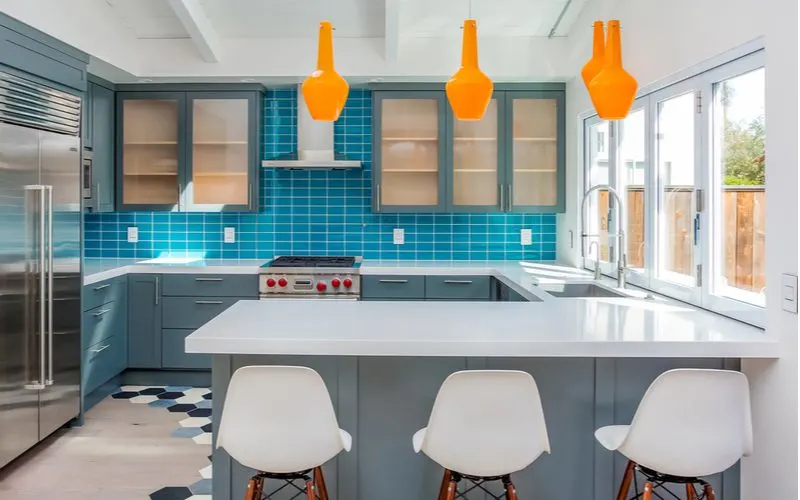
Krista Abel/Shutterstock
Bright and funky azure blue subway tiles stacked straight in the stack bond pattern really make a splash in this bold and colorful kitchen.
With powerful color accents in the backsplash, stove knobs, and lighting, the effect here is bohemian and fun with a stylishly chic twist.
Light Gray Subway Tile Backsplash With Pixel Mosaic Centerpiece
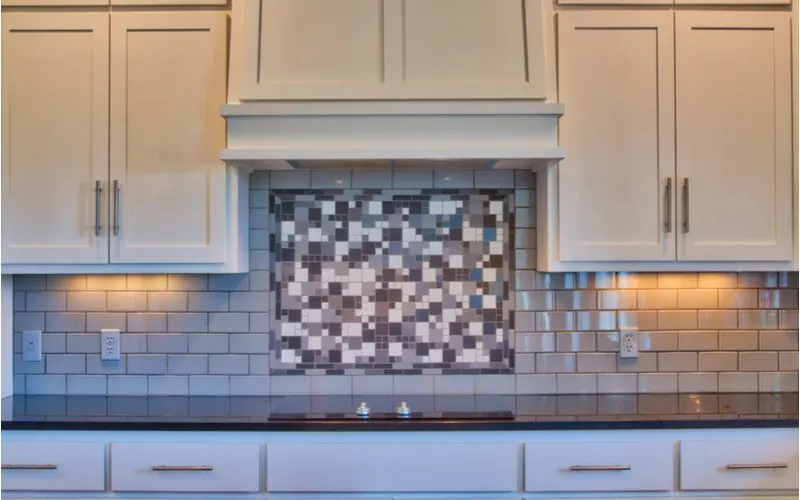
Travis McElhany/Shutterstock
If your kitchen’s color scheme calls for gray subway tiles, this is a nice option to consider.
We love how the homeowner opted for dark gray grout to define and separate the tiles arranged in the classic brick bond pattern.
The pixelated mosaic tile centerpiece in the middle is the focal point, but it’s balanced by the subtle gray tiles around it.
Subway Tile Backsplash Sizes
The traditional size of subway tiles is 3 inches wide by 6 inches long. Today, manufacturers create a range of sizes for subway tile to accommodate more homeowners’ needs and design preferences.
No matter how long or wide the tile in question is, there is a general rule it needs to meet to be considered subway tile. Subway tile must be twice as long as it is wide to keep that traditional rectangular shape.
We’ve seen subway tiles as small as 1 inch by 2 inch (for mosaic subway tile) and as large as 4 inch by 8 inch for a macro look.
Contemporary tile that doesn’t meet the standard length/width rule isn’t uncommon, and we’ve seen rectangular ceramic tile in 2 inch by 8 inch measurements sold as subway tile.
Subway Tile Backsplash Prices
| Subway Tile Category | Price |
|---|---|
| Low End | $1.35/sq.ft. |
| Average | $7-$13/sq.ft. |
| High End | $10+/sq.ft. |
| Additional Costs for Labor, Sealant, Grout | $5.50/sq.ft. |
| Subway Tile Backsplash Total Cost Average | $600 - $1,350 |
How much is a subway tile backsplash going to cost you?
That depends on a few factors, including the grade and type of tile you buy, whether you choose to DIY install or call a professional, and the number of square feet you need to cover for your backsplash.
In general, real ceramic subway tile costs about $1.35/sq.ft. on the low end (budget, basic white tile) to $10+/sq.ft. for handcrafted, artisan subway tile in a range of patterns and colors. The average price range for subway tile is $7–$13 per square foot.
For reference, there are 8 traditionally-sized subway tiles (3 in. x 6 in.) in every square foot.
When you consider the price of subway tile for a backsplash, you’ll also need to factor in the cost of labor and the needed materials for installation, including grout and sealant.
Home Advisor reports that you can expect to tack on an additional $1.50 per square foot for sealant and grout.
If you’re having a professional install your subway tile backsplash (and we definitely recommend it), you can expect to pay about $4/sq.ft. for the additional labor costs.
If your installer needs to remove your current backsplash before installing your new subway tile, there will likely be an additional charge for that.
On average, installers will add about $0.50 per square foot to their labor charges if they need to remove existing tile or if the job is particularly challenging and requires more cutting (like installing around an outlet or window).
This means that when it’s all said and done, you’ll end up spending somewhere between $600 and $1,350 to have a subway tile backsplash professionally installed in your kitchen.
Home Advisor notes that most homeowners spend around $1,000 on this home improvement project.
How Much Subway Tile Do You Need for a Backsplash?
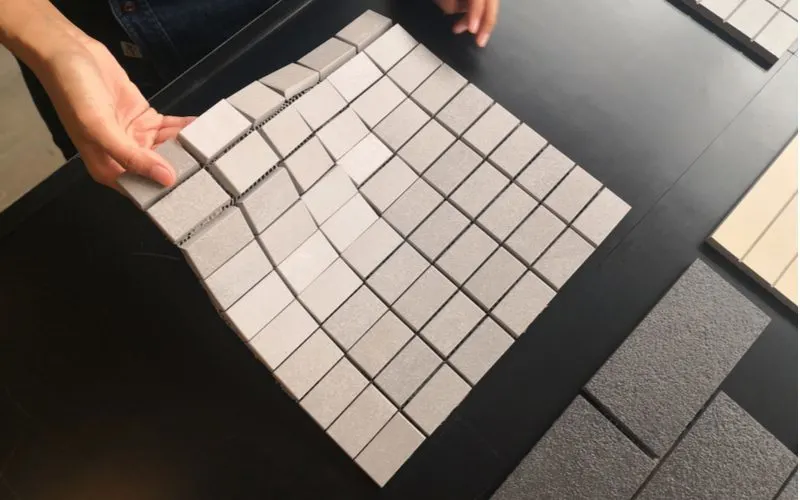
Omkoi/Shutterstock
A subway tile backsplash is one of the most affordable ways to work the subway tile trend into your home.
Instead of tiling the entire wall, floor, or countertop, you only need enough tiles to cover the backsplash area, typically around 30 square feet.
Since it takes eight 3×6 subway tiles to cover one square foot, you’d need 240 tiles to cover the average backsplash.
But this is just a general calculation. If you want to find out exactly how much subway tile you’ll need to update your backsplash, follow these steps:
- Measure the backsplash’s width and height.
- Multiply the width by the height to calculate the backsplash area in inches.
- Divide the inch total by 144 to convert to square feet. Round up if needed.
For example, I measured my backsplash and found it to be 48 inches wide by 18 inches tall.
Multiplying 48 by 18 gave me a total of 864, so I divided that by 144. Dividing 864 by 144 gave me a result of 6, and that’s exactly how many square feet of subway tile I’d need for my project.
But since home projects are rife with surprises, it’s wise to add 10-15% to your total square footage to cover any mistakes, cutting issues, or breakage during installation.
Is a Subway Tile Backsplash the Facelift Your Kitchen Needs?
We’ve looked at subway tile backsplashes from all angles—what they are, the benefits of using this type of tile as a backsplash, different subway tile patterns and layouts, tile sizes, the average prices, and how to calculate how many tiles you’ll need for your kitchen project.
The last thing to consider is whether or not subway tile is going to be the right material for your backsplash. Here’s what you should think about:
- Does it fit your budget? Subway tiles are one of our favorite materials for a backsplash, but they’re not the cheapest material, at $7–$13 per square foot on average. Does subway tile fit into your kitchen remodel budget?
- Do you love the look? The classic rectangular shape of subway tiles is attractive to many, but some may find the look to be too industrial or stark. You might consider unique tile patterns, a larger version of the classic tile, or a pop of unexpected color in the tiles to remedy this.
- Are you committed to it? Subway tile lasts for 50+ years, so it’s going to be around for a long time if you have it installed. Make sure this is the style you’re willing to commit to when you’re choosing your backsplash material.
- Will you hire a pro or DIY? DIYing a subway tile backsplash is sure to be a frustrating and challenging project if you don’t have tile installation experience. From making precise cuts for a perfect fit to properly applying grout and sealant, there are lots of chances for mistakes to be made. Think about whether you’re planning on trying it yourself to save money or letting a professional handle the job for the best results.
The versatility, attractiveness, and durability of subway tile backsplashes make them a mainstay in millions of American homes.
If you can fit it into your budget, choosing a subway tile material for your backsplash will ensure you have a long-lasting, easy-to-clean tile that is stain, heat, and moisture resistant to make your time in the kitchen a little less stressful.
Can your current backsplash do all that? If not, it’s time to consider revamping your kitchen—the heart of the home—with a subway tile backsplash.
Are subway tiles out of style in 2022?
 No, subway tiles will never go out of style. They’re a versatile style that fits any kitchen aesthetic, and the ceramic material is both durable and cleans up well.
No, subway tiles will never go out of style. They’re a versatile style that fits any kitchen aesthetic, and the ceramic material is both durable and cleans up well.
Subway tile was introduced in the late 1800s and is still in style today, so we consider it to be timeless.
Is subway tile good for kitchen backsplash?
 Yes. Subway tile is one of the most popular types of kitchen backsplashes because it’s easy to install, affordable, timeless, and extremely durable.
Yes. Subway tile is one of the most popular types of kitchen backsplashes because it’s easy to install, affordable, timeless, and extremely durable.
In fact, it’s one of the most timeless styles of kitchen backsplashes you can buy. Even better? It’s far better for the environment than peel-and-stick tiles.
Will subway tile go out of style?

No. We don’t think simple white subway tile will ever go out of style. The white rectangular design you’re used to seeing goes with pretty much any countertop and color.
So while you may update your kitchen over the years, the subway tile will always match whatever aesthetic you choose.
What does subway tile backsplash look like?
 Subway tile was originally created to line the subway tunnels in New York City, and the classic white square rectangular design bears its name today.
Subway tile was originally created to line the subway tunnels in New York City, and the classic white square rectangular design bears its name today.
It is typically 2″ by 4″, comes in glass or ceramic designs, and is usually white or grey in color.
What is the most popular backsplash for kitchens in 2022?
 Subway tile is by far the most popular kitchen backsplash in 2022 due to its versatility, timeless design, and low cost.
Subway tile is by far the most popular kitchen backsplash in 2022 due to its versatility, timeless design, and low cost.
The plain white subway tile backsplash fits well with any kitchen aesthetic and is very stain-resistant and durable.

